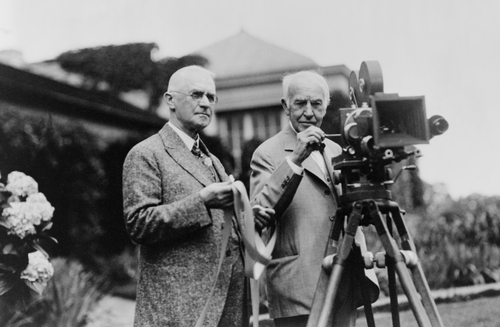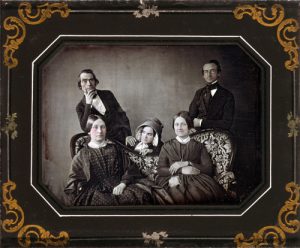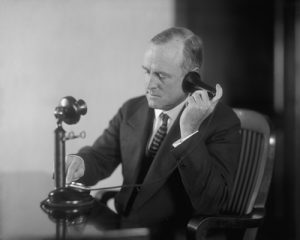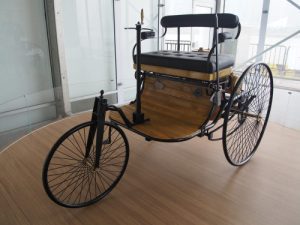
Just imagine you’re at home when you get a phone call from a friend to say they want to treat you to a night out at cinema. You say you might be a little late so they send you a photograph of your cinema ticket over the phone. As you leave home, you switch off the light, just before getting in to your car to make the short journey to the local cinema. I think it’s fair to say that might not be such an unlikely scenario for many us.
Can you imagine if we had to live our lives without any of the fore-mentioned technology? So, when and where did all this scientific know-how come about? Here’s a brief overview of the beginnings of five great inventions of the 19th-century we would still find it difficult to live without:
Photography (1839)

Photo credit: Everett Collection/Shutterstock.com
Daguerreotypes were produced from the first practical form of photography. The method, which employed the use of mercury vapour, produced a highly polished image on a silver-plated sheet of copper. The photographic process, developed by the French artist Louis Daguerre, became available to the public in 1839. However, by 1860, Daguerreotypes had been superseded by new, less expensive methods of photography, such as ambrotype, tincard and cabinet type.
Telephone (1876)

Photo credit: Everett Collection/Shutterstock.com
The invention of the telephone is widely attributed to Scotsman Alexander Graham Bell, who patented his invention on 14 February 1876. His method of telecommunication involved the use of electromagnets and electrical signals to transmit vibrations. However, did you know his fellow inventor Elisha Gray, filed a patent for a similar device on the very same day? Gray’s patent actually arrived at the busy Washington patent office some 3 hours before Bell’s. However, Bell’s lawyers were insistent on making the necessary payment to lodge the patent that same day. Bell made his now famed very first telephone call just 3 days later.
Light Bulb (1879)

Photo credit: umaruchan4678/Shutterstock.com
Alessandro Volta, Humphrey Davy, Joseph Swan and others, were all instrumental in the development of the light bulb. However, it is Thomas Edison who is generally credited with the invention of the light bulb in 1879. Why? Because it was Edison who was created the first fully-functional lighting system, which included a generator and a practical incandescent light bulb. The artificial light created by the bulb allowed people to work and socialise during the hours of darkness for the very first time. The light bulb also revolutionised people’s sleeping patterns, which were much more spasmodic prior to its introduction.
Motor Car (1886)

Photo credit: Carrie Fereday/Shutterstock.com
It was the German Karl Benz who developed the first practical “horseless carriage”. In 1886, he patented his three-wheeled motor car, the “Motorwagen”. His car design, using a four-stroke engine, was the first such machine to fully generate its own power. The Motorwagon is generally recognised as the real first modern automobile, thus promoting the notion of Benz as the inventor of the motor car. In the years that followed, Benz went on to built his own motor car company, which still exists today as part of the Daimler Group.
Cinema (1895)

Photo credit: David Franklin/Shutterstock.com
There were several inventors who have a hand in the development of the cinema. The most famous, Thomas Edison, created the commercially successful Kinetoscope, which enabled one person at a time to view moving pictures. However, in December 1895, it was the Lumière brothers, Auguste and Louis, who were the first to present projected moving pictures to a paying audience in Paris. They accomplished the feat using their invention, the Cinématographe, which was an all-in-one camera, projector and a film printer.
Header photo credit: Everett Collection/Shutterstock.com





